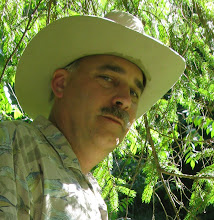Wisconsin stands up, shows the world how to use social media
As some of you may know, in November of 2010 Wisconsin elected a new governor, Republican Scott Walker. Upon taking office, he began implementing a previously undisclosed agenda of vilifying public workers and attacking the collective bargaining rights of public employees, weakening environmental rules, huge cuts to education and social services, limits on damages paid by corporations for malfeasance, the privatization of all government services, and implementing voter suppression legislation while simultaneously enacting tax breaks and handouts to corporations. Walker's secret agenda was not of his own design, but rather was written, and underwritten, by corporate interest groups, notably the billionaire Koch Brothers, ALEC, and their agents. The GOP fell in line. Scott Walker, an ambitious C- student and college dropout, channeling Ronald Reagan, chose to take point in the war on America’s middle class. A reporter pretending to be one of his Koch Brothers patrons punked him in a 20 minute phone call where Walker laid bare his plans to his (perceived) masters.
The citizenry of Wisconsin didn't like this and stood up, occupying and sleeping in the state capital for 25 days, and rallying protests in Madison exceeding 150,000 people. These protests spread throughout the state and the country to Michigan, Florida, Ohio, Tennessee, Washington, New York, South Carolina, Texas, Indiana, Iowa, Pennsylvania, New Jersey, Minnesota and other states. Currently, no Republican can speak in a public forum, anywhere in the US without being confronted by angry citizens. #wiunion mobilized recall petitions against eight Republican Senators and successfully forced recall elections of an unprecedented six Republican Senators. #wiunion's use of social media combined with use of old media is unprecedented in the history of populist movements.
We learned from #Egypt, #Jan25 but took it further. This article is a nice summary, although there is much more #wiunion social media highlights.The struggle, the innovation goes on. I’ll follow this with a summary of social media tools used by #wiunion. Watch what we do.
Labels: #p2, #wiunion, scott walker
